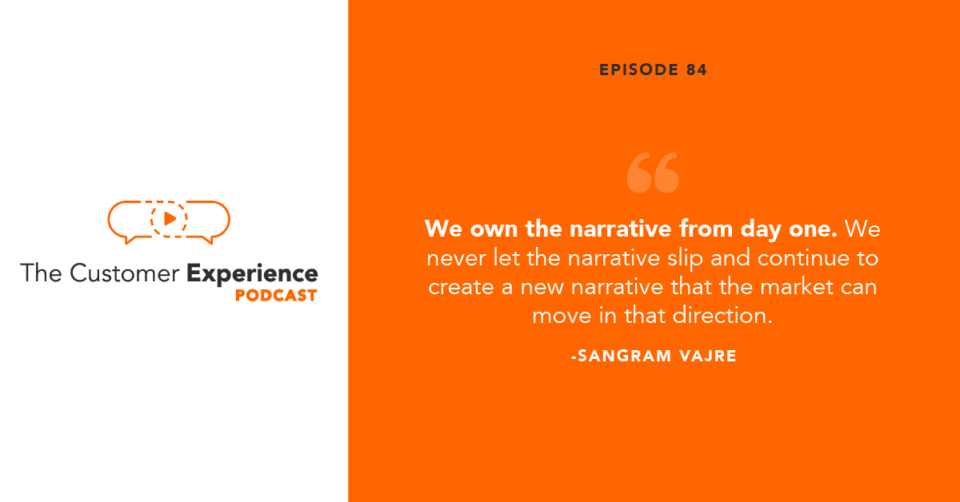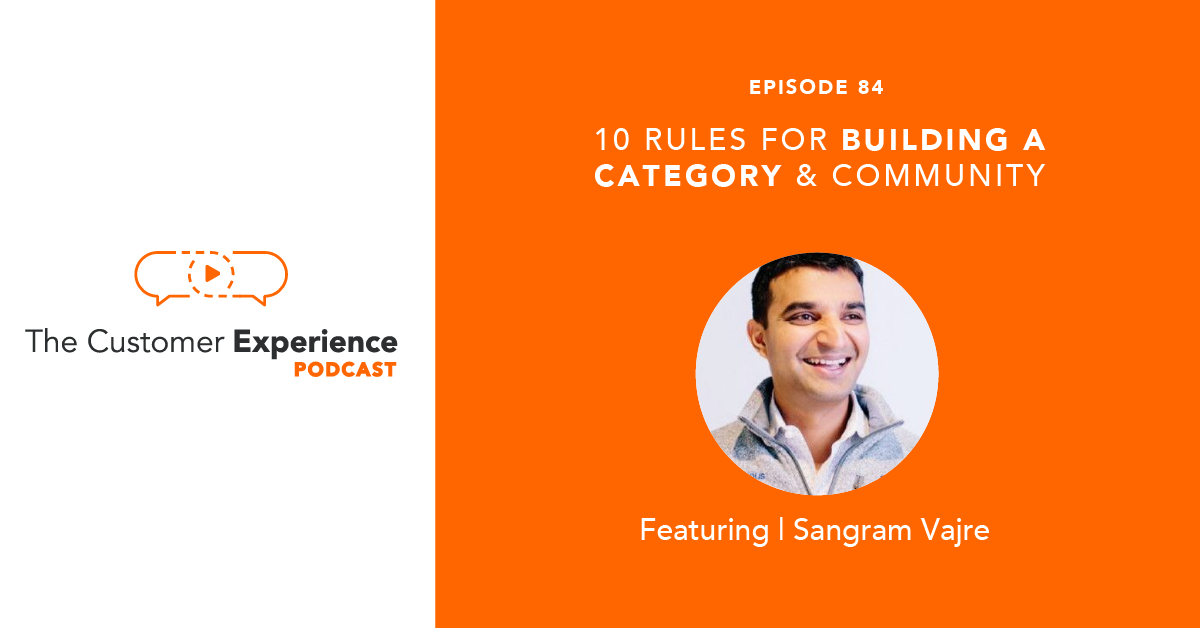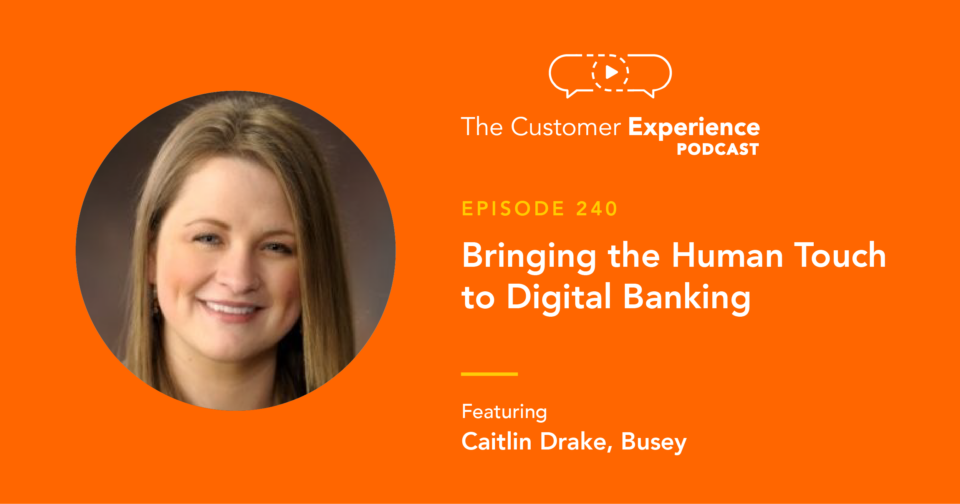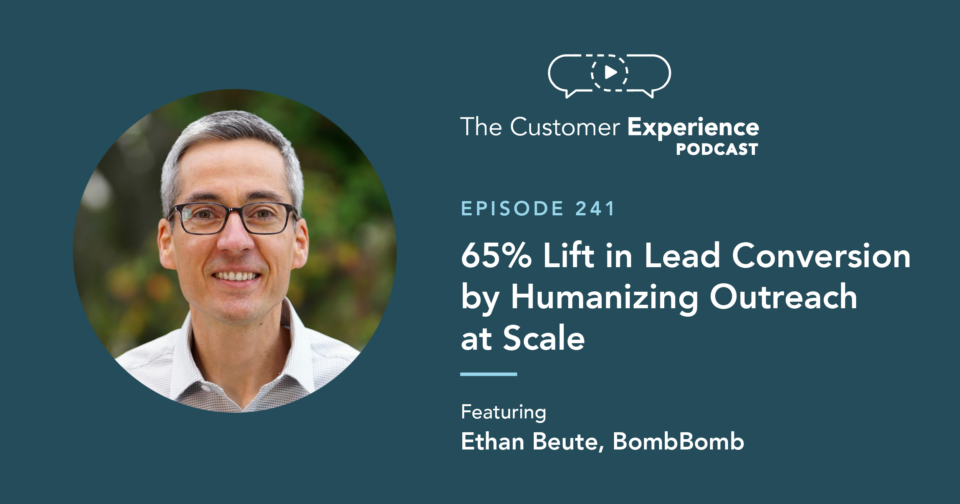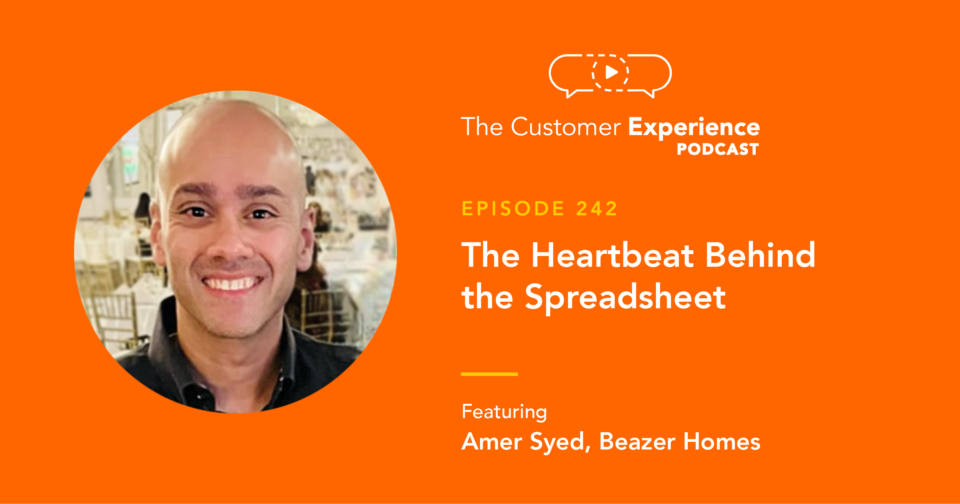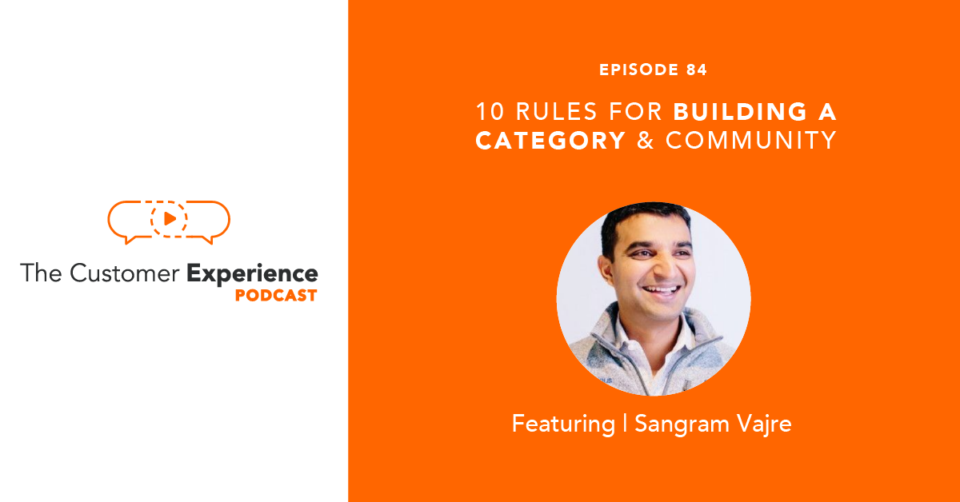
Listen to “84. 10 Rules for Building a Category & Community w/ Sangram Vajre” on Spreaker.
Apple Podcasts | Google Podcasts | Stitcher | Spotify
Building a category may be a conversation for entrepreneurs, but building a community is a conversation for humans. Which of the two are you prioritizing?
Because the greatest way to grow your business is not to build your brand or throw events. It’s to grow a community around the solution to a problem.
If you do this, your branding and category design goals will be achieved naturally.
In a recent presentation at Emory University, our returning guest on this episode of The Customer Experience Podcast, Sangram Vajre, introduced 10 steps to building a community – and, incidentally, a category and brand.
I asked him to elaborate on the most misunderstood steps and how his job title of Chief Evangelist (which absolutely inspired mine), represents the idea of a community leader.
The “10 Rules for Building a Community” include:
1. Talk about the problem
2. Tell a story
3. Bring the top thought leaders together
4. Bring the best practitioners together
5. Bring competitors together
6. Put on a show
7. Unbrand everything
8. Educate educate educate
9. Write enough that it becomes a standard
10. Give credit to the community
Chief Evangelist and Co-Founder at Terminus, Sangram and his team created the category of ABM (Account-Based Marketing) and created a community around it.
He’s the author of “ABM is B2B” and “Account-Based Marketing for Dummies,” the originator of the #FlipMyFunnel movement, and host of the #FlipMyFunnel Podcast, now more than 600 episodes strong. He’s also been doing LinkedIn Live very, very consistently.
In this episode, you’ll learn about the power of category, community, and evangelism. Among our topics:
• Where the relationship between Category and Community lies
• Why evangelism is the purest form of sales
• Why community is built around a problem, not a product
• Why practitioners‘ voices are needed, not just experts’ voices
• What unbranding really means (and how to do it)
10 Rules for Building a Category and Building a Community
Hear the entire conversation with Sangram Vajre on building a category and community right here:
Listen to “84. 10 Rules for Building a Category & Community w/ Sangram Vajre” on Spreaker.
Hear this episode of The Customer Experience Podcast – and many others – by subscribing to in:
While you’re in your preferred player, please take a minute to subscribe and to provide a rating or review. A minute of your time is so valuable to our growing podcast community.
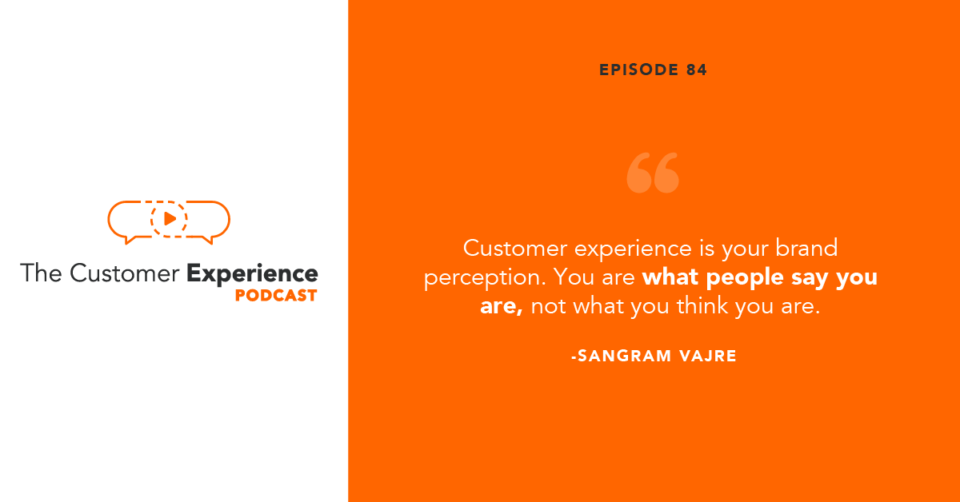
Full Transcript: 10 Rules for Building a Category and Community
Ethan Beute:
Ten rules for building a category and for building a community. That’s what you’re getting here on this episode and it’s coming from someone who’s been a driving force, or the driving force, behind a new category and several communities. The category is account-based marketing and he wrote two books on it, Account-Based Marketing and ABM is B2B. He created the Flip My Funnel Movement, a community and event series, and a daily podcast that’s more than 600 episodes deep now and he co-founded Terminus, an ABM software company with a nearly 5,000% growth rate over the past few years.
Ethan Beute:
We share a title, Chief Evangelist, but he had it first and his inspired mine. He’s an exceptional human being and someone you must follow on LinkedIn, in particular for all the lives that he’s doing with great guests and important topics. Sangram Vajre, welcome back to the Customer Experience Podcast.
Sangram Vajre:
Dude, you just saw me. Can you give me a copy of that introduction? I’ll give it to everybody. You just make me sound really cool.
Ethan Beute:
Absolutely. Happy to copy and paste that. Before we get going, it’s good to have you back. Before we get going, you’re in the Atlanta area. It’s mid-May, what’s the situation there for you or your family or your team or your customers around the pandemic?
Sangram Vajre:
Interesting, as you broadly can. I don’t know if people who are listening maybe would laugh, but I’ve got my son sitting right behind me because I’m like, “You know what? If I’m going through this, you’re going through this.” So, we’re going through this together. He’s doing his homework or watching some stuff, while I’m doing all customer calls, executive calls, podcasts, whatever it might be. And I think what’s interesting to me is that I think we have gone from boardrooms to living rooms without a whole lot of time to rethink and transition and reframe. And we just jumped into it.
Sangram Vajre:
And I remember a conversation I had with someone in early January, and they said, “Our business can never go, never go remote! Our business, our lifeblood, our culture is everything.” And now, they told me they’re actually having the best time as a business because they’re having super efficient, they’ve grown. Somehow their business actually worked better online, they just didn’t know that. So, it is so interesting.
Sangram Vajre:
So, there’s two parts of me, I feel like, and probably similar for you. There’s one part of me that’s like heartbroken and looking at this as though, it’s like, “Oh my God. There are so many businesses that are not functioning well. So many people have lost jobs. So many difficult times, so many people have lost lives.” And then, things doesn’t seem to be completely, will never be the same for a lot and lots and lots of people. And then, this other part of me, which is the optimist, true entrepreneurial for me, is like, “Oh man, only… Let no crisis ever be left without turning that into an opportunity.” So, I see every organization, every person is now is the time. Literally, now, when everybody’s on their backseat, you have an opportunity to do something really, really great for your community, for your organization, for yourself.
Sangram Vajre:
So, I have these two emotions simultaneously going through and flowing through me. And that’s where my heart is.
Ethan Beute:
Yeah, it’s really good. And I see both of those too, and it’s hard not to recognize both sides of that. And to the optimistic side of what you offered there, which is just beautiful, I have this confidence that we are, as a broader culture, despite some of our flaws, I feel very confident that there’s enough energy and creativity, and simply a will to survive and thrive that anything that this new environment presents to us as we kind of keep figuring out where this whole thing’s going; people are going to build business models and employ people around whatever has changed in different… So, as much destruction as there is, from an economic standpoint, I trust that as a community of people who want to work and solve problems and be of value, that we’ll figure out. And there are enough leaders, I think, to create those opportunities for all the people that might not see those opportunities for themselves.
Ethan Beute:
So, that was awesome. Thank you for that. You’ve already done this once, but I’m going to ask you to do it again. When I say customer experience, Sangram, what does that mean to you?
Sangram Vajre:
Well, I’ve done this before. By the way, am I… How many times have you had people come back to your podcast?
Ethan Beute:
Only once.
Sangram Vajre:
Oh, man! I feel lucky. I feel lucky and blessed. Thanks for having me again. That’s cool. Customer experience, to me, it’s your brand perception ultimately. I think we all know, and we have heard this, that you are what people say you are, not what you think you are. You might have your own perception around your brand and your company and, “Ooh, we solve this.” And then, you go out and ask three of your customers, and they have an entirely different perception of who you are or what you do. Dude, that’s it. You have to help change that, otherwise you can say all you want in your office.
Sangram Vajre:
So, I think customer experience is just that. Nobody ever says, “Oh, their marketing sucks, but their sales team is amazing.” Right? Nobody does that. Nobody goes on G2 and says that, “Oh, we love Terminus, the executive team. But we hate their customer success.” Nobody does that. People love a brand, so there’s no handoffs, there’s no nothing. Its brand, is a brand, is a brand. It’s just you, fully, you have to own the responsibility for good. And own the responsibility for the great and own the responsibility of whatever is bad altogether. So, I think it is what others say about you.
Ethan Beute:
Really good. That’s exactly, I mean I say similar. I say that it rolls up to those stories. It starts as the feelings that we leave people with, how do they feel about us? And about all of our people, not just that one team or that one person. And you’re right about that too. We don’t just compartmentalize these things. I only have so much mental capacity to commit to a brand or a product or a service. You’re all kind of one thing to me, and it’s favorable or it’s negative and capable of being saved, or it’s worst-case scenario in a lot of situations, it’s just neutral. I don’t really have any strong feelings.
Ethan Beute:
Let’s go to two other words. You don’t need to define them, but we’re talking about category and we’re talking about community. What’s the relationship between them? Do you see them as somewhat synonymous? And what’s the state of affairs right now? Do you feel like they’re more important than ever? I feel like…
Sangram Vajre:
Yeah, it is.
Ethan Beute:
Talk about category and community and how they relate to one another.
Sangram Vajre:
Yeah. So, category now is probably more important of a word for maybe founders or somebody who is a venture capitalist or somebody who, more on that side of the house, right? You’re trying to build an entirely brand new category. That’s more of an entrepreneur conversation. Community is, I think, where we all are. We all want to be part of a community, and now more than ever you want to be part of a community.
Sangram Vajre:
So, you know this thing that I always say that without a community you’re simply a commodity. And last week, I did a talk at Leader Cast, and I introduced this new phrase that we had an exchange on LinkedIn on that, which is I think leadership itself has become more and more diluted. And what I mean by that is every single person can define leadership in their own way, shape, and form and it’s different because people are different, leadership is different. But what hasn’t changed, since the beginning of time, that we all can think about and go back is the idea that we always live and build around a tribe, a community.
Sangram Vajre:
And there was always a community leader if you want to see, or tribe leader. And if you’re a DCR, a founder or an entrepreneur, think about that as a category leader, right? Everyone owns something, that this is part of it. And then, everybody else wanted to be part and select, which tribe do you want to be on? And I think that is so true and has always been true as people, for us. So, to me, both ideas are really interesting but the words are used in a very different context depending on who you’re talking about. And it’s really important now, more than ever.
Ethan Beute:
Yeah, I agree. And it is interesting when you take it back all the way. I mean, we’re a social species and we have individual identities but it’s formed in part by those around us. And we gravitate toward people who make us feel better about ourselves, or fulfill our identity or help change it or something. It’s really interesting when you take it to that level.
Ethan Beute:
So, I want to go through, you put up this post a while ago now, but I love it. It’s such a great list. It was a presentation you gave at Emery University there in Atlanta. You may have given it elsewhere, but it was essentially 10 rules to create a category. Before we get into them, why did you bring this talk in particular? I’m going to assume, and correct me where I’m wrong, that you had a relationship there and someone was like, “Hey, Sangram, would you come share some wisdom with our class?” Why did you bring this conversation? And kind of how did it go? And did the students engage on it?
Sangram Vajre:
Yeah, that’s a great question man. So, Jeff Burkens, shout out to him. He’s a CMO of at Park Mobile here in Atlanta and he does guest lectures at Emery. So, he was just looking at different topics for his marketing course that he was teaching as a faculty to bring in people from different perspectives. And he wanted me to come and talk about this idea of how is it that we built a category or this whole business around this idea of a campus marketing in Atlanta? Because he has seen it, he has been on the front row seats.
Sangram Vajre:
And in his words, I think what we did was something that he didn’t think most organizations would even start doing. It’s not found in the books that marketing students go through. So, he wanted to bring something totally new and interesting. And the class was very much engaged. The class kept asking …and they said not once, and I don’t know if this is a bad or a good thing, so you can be the judge of it and let the community judge for themself. They said not once you told us what your company does and what you do at that company. But I’m on your website and checking it out now. I’m like, that’s exactly my point. And then, I was done.
Ethan Beute:
That’s so good. It reminds me of you were kind enough to allow me to guest host a series on Flip My Funnel, and you were one of my four guests. It was about chief evangelism and that-
Sangram Vajre:
Oh, one of the best app series, man. I’m so grateful you did that.
Ethan Beute:
Yeah, thank you. It was awesome. It was so fun to do, and I learned so much about it. But that was a theme, certainly in our conversation, and certainly with the one with Dan Steinman from Game Site, where it’s you teach about the problem. And now I’m getting into the list a little bit, but you teach and talk and build community around the problem or the opportunity, not around the product itself. It’s not about the brand or whatever.
Ethan Beute:
But invariably, and I definitely remember this in particular from Dan Steinman, he said, “Anytime I would get off of a stage and people come upfront. Some share of the audience always comes up to engage you. And some people ask you a follow-up question about the content in particular. But then the other half of the people say exactly what you just said.” Which is, “I don’t quite know what Game Site does, but tell me more about the product. How much does it cost? What does it do for me? Et cetera.” And so, it’s pre-sales but it doesn’t have to be. And I know you attach to what Guy Kawasaki shared about that too, which is it’s the… Do you remember exactly what he said?
Sangram Vajre:
I think he said, and for people who don’t know Guy, Guy Kawasaki was the first chief evangelist of any tech company. He was at Apple. The first and only chief evangelist for that matter. I think he said that chief evangelism is the purest form of sales.
Ethan Beute:
Exactly right, yes.
Sangram Vajre:
Yeah. And that was really interesting for me to think about, is like, it’s the purest form of sales where ultimately, you… And then, the point is like, and you know this, I get to speak at 20/30 different events ever, at least, physically until this happened, not virtually but physically every city. And sometimes, he got even paid for me to come and speak.
Sangram Vajre:
Now, that does not happen if you are going on a stage and pitching your organization, right? So, that’s the point of evangelism. That’s the point of building a community, that people stop focusing on, for a minute they forget, “Wait a minute. What company was that?” And they get emersed into the problem and they start nodding with you on what’s going on and feeling that, “Oh, that person understands my problem.” And now, they all of a sudden have an affinity of who you are. And then, whatever you represent. And whatever you represent, they want to be part of that and that’s how you start building the very first tenants of your community work.
Sangram Vajre:
So, that was a fascinating interview with Guy. So, thanks for setting that up.
Ethan Beute:
Yeah, it reminds me, we’ve both been at enough events and you know that there’s a lot of pay to play out there. And so, a lot of the people that are on these stages are just coming out. They’re not even thinly veiled. They’re not even veiled at all. They’re just straight sales pitches. And typically, they’re not very good presentations at all. So, when you come with a true excitement and passion about how other people can benefit from the ideas, not from a paid subscription or whatever, it’s just, it differentiates you immediately from a lot of the other people that share that same stage.
Ethan Beute:
So, let’s get into these 10. Let’s do this as a speed round. I’ll read them, and you just give me your first thought on it. And then we’ll go deeper into a few of them because obviously we don’t have time to do them all.
Sangram Vajre:
Right.
Ethan Beute:
But I do want to run through them. So, just give me your first thought about them, as I go. Number one, talk about the problem, not about your product.
Sangram Vajre:
Community is created around a problem, not a product. A product will change and should change. You can fall in… If you fall in love with the product, if it doesn’t work you feel like you’re a failure. If you fall in love with the problem, you can have a community and they will give you a pass until you figure out the right Apple solutions, as long as you need. So, community really gives… The problem-focused idea really gives you a much longer of a runway than a product-focused conversation might do.
Ethan Beute:
So good. Number two, tell a story that matters.
Sangram Vajre:
This is the part we all know. Stories stick all day long. Each one of us can tell stories from our childhood and whatnot. So, stories are different than case studies. Stories are different than videos of a very well crafted program that you just did. Stories are actually saying that “Hey look, here’s how I failed. Here’s my problem. Here is what I learned from it. Here’s what I thought it was, but it’s not. And here’s what I found out it was.” So, stories is like taking people on a journey and if you get good at that you can get people on a journey, which leads to for them to following you or being with you on that. And that is a really good way to start whatever group you’re starting out there.
Ethan Beute:
It is, and I like the subtext thereof honest and approachable. Part of the story mattering to someone else is that they can relate to it because it’s not overproduced. Number three, bring the top thought leaders together who care about the problem.
Sangram Vajre:
It’s the classic challenge where I can remember in the very early days like nobody knew me. And it’s not like everybody knows me, but at that time, absolutely zero. If now there’s one, then at that time was zero number of people knew me. And what it was turned out to be the best thing we did was we said, “You know what? We don’t need you on the microphone over here. We just need to bring people together. We need to bring the people who people listen to. Because if they listen to that person, then 10 people will show up for every person we bring in.” And that’s how we got the first 300 people to the first Flip My Funnel Conference. And we then started doing that at 10 or 12 conferences we have done.
Sangram Vajre:
So, the idea is that bring people, give them the platform so that they can share your message and the problem that you’re focused on from the platform. And if their message is starting to spread, then your message will spread with them. So, it really amplifies everything.
Ethan Beute:
Love it. Number four here is bring the best practitioners together who care about the solution.
Sangram Vajre:
Yeah, so this is a big thing we realized. It is good, not great, it is good to bring top leaders who have tons of following because they will bring some sort of just overall ethos with them to the whole thing. It’s going to make your event look legitimate. And then, not letting the known people, who actually give practical advice, are the things that people really care about. So having a good blend at any conference, any community event you’re doing, bring the big keynote that people would pay money for if you think about it. And that’s great, but real value is in the cohorts of people where they say, “You know what? Yeah, I need some tactical stuff that that person’s talking about.”
Sangram Vajre:
So, a good mix of that is really important. Don’t do one way or the other.
Ethan Beute:
Yeah, and someone I can relate to. It’s like, that’s someone who is in a seat that’s a lot like the seat that I’m in. Their problems every day are my problems or they experience it the same way I do. Really good. I think last one in what feels like a three-part series here is, number five, bring competitors together who can help the community. So, you’ve got thought leaders, practitioners, and you’ve built that bridge nicely. But you also bring competitors in.
Sangram Vajre:
Yeah, so this is the part where you can actually go from a company event to an industry event. So, a company event would be, or our user conference would be where only your customers come in and you do all the same amount of effort but as soon as you get competitors involved they will bring their folks over there too. And all of a sudden you become an industry conference. And if you become an industry conference, then you’ll actually have media over there, analyst over there. You’ll have all kinds of conversations happening over there because now, people want to be at that conference or at three different conferences, right?
Sangram Vajre:
So, bringing competitors might seem like a rookie move or almost like I’m taking a backstage. But ultimately, I feel like if you are good, if you are focused on the problem, not on the product. If you’re focused on the problem, then you will bring in thought leaders, practitioners, and competitors. It actually makes you look more legitimate, that, “Oh wow. They are going to bat for me. And they’re okay. That means they must have something that they’re confident about.” And people will come and talk to you at your booth.
Ethan Beute:
Yeah. It’s a little bit counter-intuitive. It’s a little bit bold, but it makes so much sense. Again, for folks that are listening, these are 10 rules to help build a category and to build a community. We’ve gotten through five already. If you don’t want to write these down you can go to BombBomb.com/podcast. I’ll have all of them in there, and of course, other links and other benefits related to this episode. And so, don’t feel obligated to write these down. They’re all at BombBomb.com/podcast.
Ethan Beute:
Number six, put on a show to bring the message to the masses.
Sangram Vajre:
That’s where I feel we did with the conferences. I remember we wanted to do, how do we launch our business? How do we let the world know that we exist? And the way we did that was just launching a Flip My Funnel conference. And what a conference does, it almost puts everybody at a pause. And takes people out of their comfort zone to a physical or virtual location. And then, now you’re all part of that conversation.
Sangram Vajre:
So, I think a lot of people put a whole bunch of effort in just what activities are going on but never create something where people have to stop and pause and look at what’s going on. And that requires a lot of things to come together.
Ethan Beute:
Yeah, it’s good. It’s how you generate that engagement where people, they can’t not participate. It’s a show. Number seven, unbrand everything because it’s not about you.
Sangram Vajre:
It’s hard. That’s probably one of the hardest things. We still, today, Flip My Funnel exists as an independent thing. Still today, VR Booth, just like everybody else. We do not have… I still do the keynote but my keynote is not about Terminus, it’s about the state of the union, of where the marketing’s going and all that stuff. So, it always creates this entrusting tension internally where, wait a minute, we’re putting together. Our effort, and why is our logo not there? I’m like, people are not stupid. They know what’s going on. They know that you’re investing in it and so, you don’t need to overly put it in their face. You need to be there and hustle the same way everybody else is. That shows that you actually got the guts to go do this thing.
Sangram Vajre:
But when your goal is to create an industry conference, gosh, you need to think way bigger than a user conference.
Ethan Beute:
Number eight, and this hearkens back a little bit to number one, educate, educate, educate about the problem and the solution.
Sangram Vajre:
Yeah. Now, this is where you don’t… So, there’s a part of all of this so far, you have set the stage. You set the dinner table. You invite…people don’t know who the host is. You’ve got a problem, right? That is not the goal there. So, at every given point, you need to be able to figure out, okay, we’re going to have to set the table, invite the people to the party, and make sure that you do the toast and people know what this is all about or where you’re going.
Sangram Vajre:
So, part of this is making sure that you own the narrative. So, what we did in our case, we went in and did, as you said, a daily podcast. We ended up writing two books on it. So, we made sure that we’re always iterating the narrative collectively from all the input we’re getting from the conference and everything else. But we own the narrative from day one. We never let the narrative slip. And continue to create a new narrative that market can move in that direction.
Ethan Beute:
Really good. Number nine, write enough that it becomes a standard. Framework, a real book, the university. There are a lot of different ways to do it. But write enough that it becomes a standard.
Sangram Vajre:
Yeah, so you know this, even the Flip My Funnel was a framework. The team thing that we put in ABM is B2B is a framework. So, everything we do is creating a standard there. So, it’s easily… One of the things, one of my favorite speakers is a pastor in Atlanta, Andy Stanley. And he talks about this idea that if it’s not repeatable, it’s not memorable. And if it’s not memorable, it’s not scalable. So, you need to figure out ways to make it repeatable, memorable, and scalable in every, way, form. It’s not just a marketing thing. It’s not just a business thing. It’s not just a product thing. But your message, you need to do that.
Sangram Vajre:
So, part of it is creating frameworks. We created frameworks. We created ABMU. We created all these different things, just to get people to still be part of that story beyond an event that you might have put on.
Ethan Beute:
Yeah, what I love about one of the implications of what you just shared there is that word of mouth and the community, a community member’s ability, to tell someone who’s maybe one foot in, one foot out, side of the community to be able to bring them in. But it needs to be memorable, they need to be able to repeat it and it needs to be repeated, probably, in a word of mouth context. And that is how the community grows one person with influence over one other person at a time. Grow, grow, grow.
Ethan Beute:
Tenth and finally, give credit to the community, not to your company.
Sangram Vajre:
Yeah. So, this is where Flip My Funnel podcast rules, right? Today it’s a daily podcast. I literally just do one episode. Tuesday Takeovers are done by fine folks like you. Wednesday and Thursday are the repeat audios from all the conferences we have done. So, they get the credit for it. So, we continue to do that. And I feel like, ultimately, our success is seeing more people having the jobs in the industry with ABM and their title. We look at the successes, like not how many people have signed up for a conference or event, but how many people are getting promoted in the businesses to do that?
Sangram Vajre:
So, finding ways, we created this Flip My Funnel awards at the end of the year that we give out to people. A real big thing that they can put on their desk. And so, we want to really celebrate that with people and beyond just saying, “Well, it doesn’t say Terminus trophy. It says Flip My Funnel trophy.”
Ethan Beute:
Yeah, I like the celebratory aspect of that. Obviously we can’t go deep into all of them, although I appreciate, I think we did a pretty good job with the speed round version of the top 10 there. Thank you for that. But when you think about that list, and obviously these are things that you’ve developed over the years as you’ve… I’m assuming that you’re kind of around this education and writing piece, that you’re just constantly developing these ideas. When you think about this list, what are two or three that you think are misunderstood or big opportunities or compelling in some other way? When you think about this list and you think about the people that you’re interacting with on LinkedIn or the people that you used to spend time with physically who are maybe, back when we could do that, at Flip My Funnel Conferences and things. What are two or three that kind of stand out to you in some compelling way? Or you could start with one at a time.
Sangram Vajre:
Yeah. That’s a great question. I think probably the most misunderstood and missed or not leveraged enough is the idea, it’s really the number one, which is the problem-focused. So, I keep saying this over and over again, that create a problem market fit, not a product-market fit. So, most software people know, or in the SAS business is that “Oh, we’ve got to get prog market fit, which means that we’ve got to have 100 customers and we ding them at X dollars an hour.” And I’m like, that’s all fine, but you’ve hit a wall at some point.
Sangram Vajre:
And what you really can do with this idea of the longship and this idea of without a community or a commodity thing, or building a community up first, is what Sales Force did, what Green Force, what Hub Spot did with Inbound and what we’re trying to do with Flip My Funnel, is this idea that, “Look, we are so focused on the problem that we will forgo, forgo, this idea that we came up with the idea, or we had anything to do with the idea. We will forgo that.”
Sangram Vajre:
So, I remember a conversation with Bryan Halogen about this. They never trademark Inbound. And I asked him, “Why didn’t you trademark it?” And he said, “Because the best ideas are things that you want to just give it away so that there will be more adoption of it.” If he actually held it, patented it, and put all together, we’re not Coke, right? We’re not doing that. It’s a different model, a different business. So, we needed to build a community.
Sangram Vajre:
And now, if anybody wants to compete with us, they will have to go through this 20,000 raving fans wall to climb up to in order to jump into, and then maybe so, they might be able to compete with our product. So, I think the challenge that I’ve seen people run into is that it is so deep. It has to be so deep that typically, in all these organizations, what’s common is it’s typically run by either the founder or the CEO of the organization. Again, go back to zen examples, Mark Benioff, like Bryan Halogen, like Visa Rosea, like Game Site, like… You think about the founder or the CEO has to be fully invested in it. It is not a one-off marketing campaign because it will be short-lived and it will be gone.
Sangram Vajre:
But as a founder, you have to be fully vested in it, which means you have to be vested in the company for a longer period of time. Not trying to flip it. So, all that creates a really challenging case for most organizations. But the companies who do it, and the people who do it, they typically have a 10X return on their investment. So, there’s a bright side.
Ethan Beute:
Yeah. And a very compelling one. I love that. I was just thinking Open Source as you were talking about Inbound and why not to trademark or patent it or anything. I just kept thinking of people that are open sourcing code and just, this is going to be so much more valuable if it plugs into more things and more people can use it, and there’s no reason to kind of hoard it up.
Ethan Beute:
You kind of hit on something that went in a direction that I would like to go a little bit deeper on, and that’s this idea of… And it’s related to kind of number seven, which is unbrand everything and how challenging that can be. I think the philosophical piece of let’s stop just talking about our brand name and our product all the time, and let’s start talking about the problem. This idea of unbranding probably calls out like, what’s the ROI around this? Why are we doing these things that don’t have our brand on them? And all that. And that kind of rolls into the question that I have for you, which is for an organization that likes these ideas and says, “Okay, this sounds like this might be for us. It sounds consistent with something that we would like to do, or we have some seeds planted that seem like they have potential for a really good community, even if it’s not a new category, let’s say.”
Ethan Beute:
How can someone operationalize this or get going around these kind of 10 activity areas? I mean, you’re obviously in a unique position where you have a lot of experience with a lot of awesome companies, including Par.SalesForce. And you co-founded the company, so you inherently have trust and people are going to trust your vision. You have a voice at the table and all this. I’m sure you’ve talked with people who’ve struggled to get going around some of these themes. What tips do you have to bring these into an organization and kind of start bringing them to life?
Sangram Vajre:
Yeah, it’s really hard. It is extremely hard. I would not advise people to do it, unless you are going to fully commit to it, and commit to it to long periods of time. The part that, as you were asking that question, I was thinking about is when I talk to… And I’m having tons, it’s funny, I’m having tons and tons of conversation lately about this than I ever did before. It tells us where we are at the time, where everybody’s trying to build a brand.
Sangram Vajre:
And one of the most interesting things about building a brand is actually doing it to not build a brand. It sounds very paradoxical but just stay with me here for a second. So, when I put stuff on LinkedIn, and you know this, there’s probably two years ago I said, “I’m going to post every day. I don’t care how many people like it or not. I’m just going to make it a habit.” I just did that and continued to do that. And that has led to a lot of great things.
Sangram Vajre:
But one of the things that happened is that I post maybe once a month about my company. And I post that with a lot of pride, like, “Hey! Because my company is doing it, I want to say something.” But only once a month. Everything else, like 99% of my post are not about my company. It’s about the person that we are potentially selling to. So, all that to do is that it creates a brand for your organization. For example, how many people you know on LinkedIn today that you don’t know which company they work for? Chances are you don’t. If you know a person you know which company they work for.
Sangram Vajre:
So, it’s not hidden. The unbranding is not saying to be invisible. The unbranding means that you need to stop thinking of people as stupid people or dumb people. People know who you work for. People understand where you’re coming from. People know what you need to go and what you’re doing. But they expect respect for their time. And you start respecting their time, start giving them value in every interaction you do. You start depositing, this idea of constantly depositing into it, so the month, end of the month or something, when you’re trying to pull a buck out of it, people would love you for that. People who want you to do that. People, who are like, “Well, what’s wrong with this person? Why is he not trying to…”
Sangram Vajre:
You want that kind of feeling in people, and again, it’s very few people do that and they lose on it.
Ethan Beute:
Yeah, it’s so interesting. I had a really great guy named Ed Breault, on the podcast. And one of his two mantras for the year is that the personal brand is the new company brand. The company’s brand is built of what I think about, and how I feel about the people I’m interacting with at your company. And in the case that you were just offering there on LinkedIn and you’re exactly right, it’s this, if I think you’re a good person or an interesting person or you’re doing interesting work, or you have an interesting perspective and I like to engage on your post. And so, you keep showing up in my feed every day, that I am going to know you. And I’m going to feel better about your company as a consequence of it. And instead of the company going out and I think that’s a nice little button on this list.
Ethan Beute:
If folks listening enjoyed this conversation, of course, you’re going to love episode 42, with today’s guest, Sangram Vajre. We titled that one: Five Ways Internal Alignment Can Elevate Your Customer Experience. And a lot of the themes that you heard today in the conversation are in that conversation. But, it was a lot more practical. We were talking a little bit more about how you work and your day to day, and the way teams are structured. And the way that you interact with one another. So, there are a lot of very practical, operational tips in that one.
Ethan Beute:
And then, more recently, on episode 74, with Steph Caldwell, who’s the senior customer success leader in community architect at Narrative Science, that one was called Using Tech To Scale The Human Touch and Build Community. And interestingly about Steph, I think you’d find her to be an interesting person too. Her first foray into community was just building a community in Chicago where she lives of young professional women who were kind of hitting, not really a glass ceiling, but were kind of hitting this roadblock in their careers of maybe not getting the promotion. So, she just organized a whole bunch of people who had this problem.
Sangram Vajre:
Yeah.
Ethan Beute:
And they got together and built a website and built a community. And they did events until we couldn’t do events anymore. Anyway, so that’s episode 42 with Sangram and episode 74 with Steph Caldwell at Narrative Science. And you can find that and all those episodes at BombBomb.com/podcast.
Ethan Beute:
I didn’t do the homework of reminding myself who you said last time I asked you these two questions. But I’m going to ask them to you again anyway. Who would you like to thank or mention as someone who’s had a positive impact on your life or your career? And what company or brand would you shout out for the way they deliver for you as a customer?
Sangram Vajre:
Oh, great questions. Well, one, being yesterday being Mother’s Day, my wife and my mom. Both of them had tremendous amount of impact on who I am. And the shape of everything, how I think about stuff. So, love, respect to them both more than anybody that I know. They have more influence on me than they know. They would not think to say that, but that it true. So, both strong, I mean incredibly strong, women.
Sangram Vajre:
In terms of brand, I feel like one brand that comes to me more than anything is Charity Water. Charity Water, people have not heard about it, it’s a nonprofit organization. They changed the way they do business of nonprofit, where 100% of the money goes to a nonprofit organization. And as a result of them, when ABM is B2B book, we give all the proceeds to a nonprofit called New Story Charity, which is another organization, very similar business model, 100% of the money goes to helping companies, helping people build houses in areas where people have no ability to build a house.
Sangram Vajre:
So, it’s really interesting when I look at, even when nonprofits are running as a business, and creating value so greater than any one of us can create it in just for-profit world. I love the combination of that. So, shout out to both nonprofits, New Story Charity, and Charity Water.
Ethan Beute:
I love it. I really like this innovation that Charity Water brought to the whole thing, that innovation isn’t just, I mean, they’re not solving a new problem. They’re solving a sadly persistent problem, which is not enough people have access to clean water. It’s actually a shocking, shocking volume of fellow human beings on earth that do not have access to clean water. So, the problem isn’t new, the innovation is the way, as you already said, the way they run the organization and essentially, run charity. So, it’s awesome.
Ethan Beute:
And I really liked what you did with that. If folks want to learn more about New Story, of course, you can visit their website and I’ll link all that up at BombBomb.com/podcast. We actually talk about it a little bit back on episode 42 as well. I forgot to ask you this, so I am going to ask you one more question.
Sangram Vajre:
Yeah.
Ethan Beute:
Becoming Intentional, and actually your offer there about your wife and your mom reminded me of it because I feel like what you’re doing with Becoming Intentional and the becoming intentional hashtag, and just this kind of philosophy really, really blends personal professional together really nicely. And it feels so true to who you are as a person. Just talk a little bit about how that occurred to you, and when you decided to kind of formalize that you’re doing things around this, becoming intentional. I feel like it’s the seeds of a community.
Sangram Vajre:
Yeah, it certainly is. And we’ll see where it goes, but I learned something, which is every day, but one of the main things I learned recently was that being intentional is way more important than being brilliant. So, I’ll say that again because it took me a while to really receive it myself. So, for those who are A-Grade people, you might need to listen again because B and C get it. Being intentional is way more important than being brilliant.
Sangram Vajre:
What I mean by that is, look, you may have the greatest, coolest idea in the world. And so many people have it every day, like people have talked about they have the idea of Uber, they had the idea of drones, they had the idea of all this crazy, crazy stuff. Right? But it doesn’t really matter because what matters is the few people who actually were intentional enough to focus enough to do that. And that’s the difference between everybody else and that 1%.
Sangram Vajre:
So, I’ve just started being more intentional about how I’m leading my family and being part of my family, part of my team, part of my community, part of my company. And I’m just realizing that it’s important to be intentional. It’s important to take a pause every so often, reevaluate what’s going on, and rethink and reimagine because you may have the best idea, best thoughts around everything. But if you’re not intentional, if you’re not writing the thank you notes, if you’re not bringing customers in the office so people can imagine, if you’re not intentional about the things that actually do matter to you and the organization to grow or yourself to grow, you’re going to miss out on it. And it’s not worth it.
Ethan Beute:
So good. As I said in the beginning, you’re an awesome human being. I appreciate you spending this time with me and with folks who are listening. I’m glad I asked that at the end, that feels like a great call to action, which is how you end Flip My Funnel. What should we do about this next?
Ethan Beute:
So, for folks that want to follow up, they want more of your teaching, more of your philosophy. They want to engage with you, or any of the communities that you’re involved in, where would you send people?
Sangram Vajre:
LinkedIn.
Ethan Beute:
Okay, Sangram Vajre on LinkedIn. You won’t miss him and you’ll be glad that you reached out and connected. Sangram, thank you so much. I hope you have an awesome rest of your week.
Sangram Vajre:
All right man, thank you so much and thanks everybody for listening.
Video Highlights: 10 Rules for Building a Category and Community
Check out the top five video highlights from the discussion with Sangram Vajre of Terminus below…
1. The Relationship between Category and Community
2. The Purest Form of Sales
3. Building a Community One: Problem, Not Product
4. Building a Community Four: Invite Practitioners
5. Building a Community Seven: Unbrand Everything
Similar Podcast Episodes You’ll Enjoy:
- “5 Ways Internal Alignment Can Elevate Your Customer Experience” with Sangram Vajre (Chief Evangelist, Terminus)
- “Using Tech to Scale the Human Touch and Build Community” with Stef Caldwell (Senior Customer Success Leader and Community Architect, Narrative Science)
- “Differentiating Your Brand by Humanizing The Experience” with Ed Breault (CMO, Aprimo)
Subscribe, Listen, Rate, and Review The Customer Experience Podcast:
